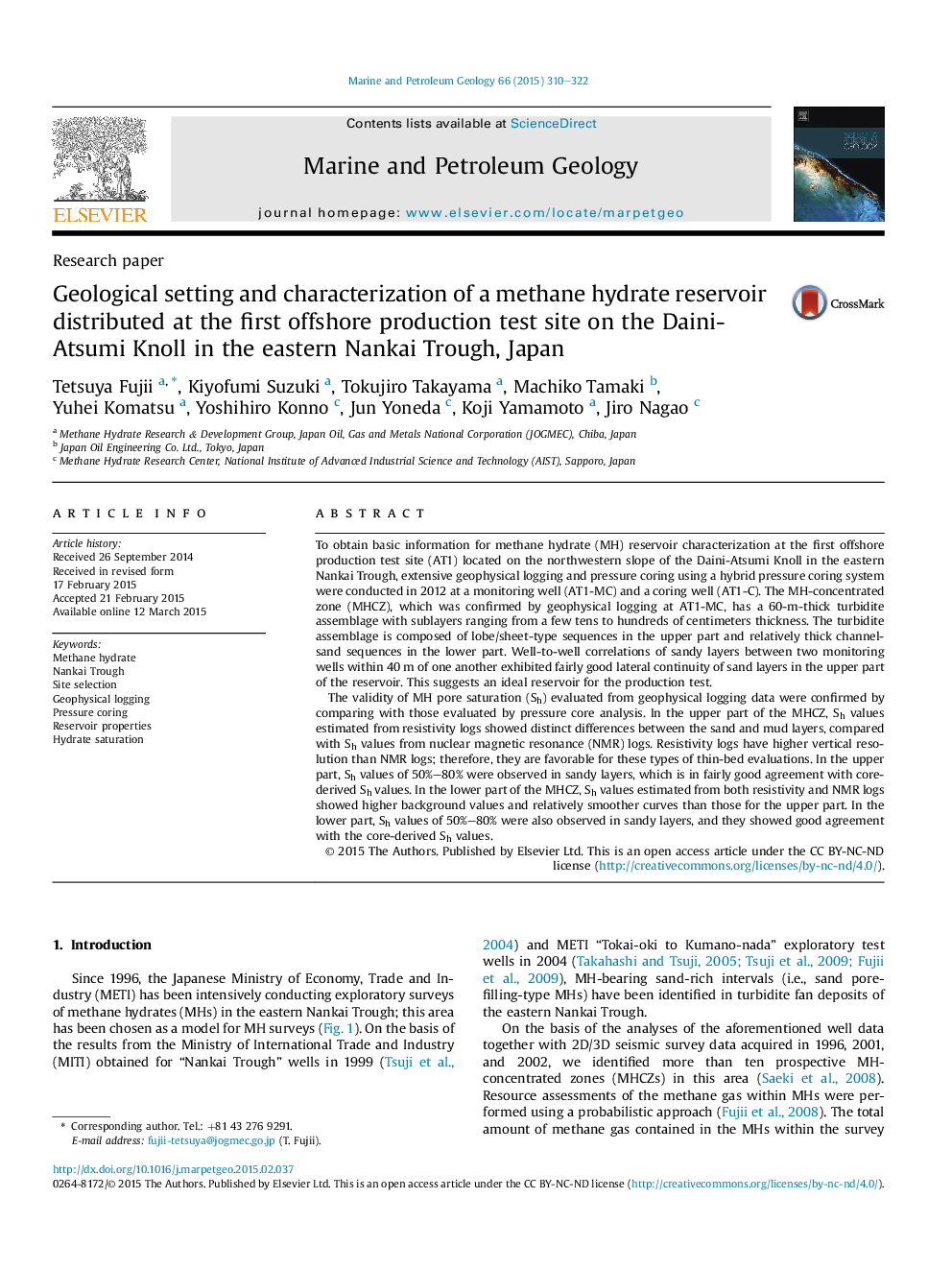| Article ID | Journal | Published Year | Pages | File Type |
|---|---|---|---|---|
| 6435004 | Marine and Petroleum Geology | 2015 | 13 Pages |
â¢Geologic settings in the β-MH-concentrated zone.â¢Well distribution in 2012 pre-drilling and formation evaluation method.â¢Characteristics of confirmed MH-bearing formation.â¢Lateral continuity of sand layers confirmed by well-to-well correlations.â¢Reservoir properties suggested from well log and core data comparisons.
To obtain basic information for methane hydrate (MH) reservoir characterization at the first offshore production test site (AT1) located on the northwestern slope of the Daini-Atsumi Knoll in the eastern Nankai Trough, extensive geophysical logging and pressure coring using a hybrid pressure coring system were conducted in 2012 at a monitoring well (AT1-MC) and a coring well (AT1-C). The MH-concentrated zone (MHCZ), which was confirmed by geophysical logging at AT1-MC, has a 60-m-thick turbidite assemblage with sublayers ranging from a few tens to hundreds of centimeters thickness. The turbidite assemblage is composed of lobe/sheet-type sequences in the upper part and relatively thick channel-sand sequences in the lower part. Well-to-well correlations of sandy layers between two monitoring wells within 40Â m of one another exhibited fairly good lateral continuity of sand layers in the upper part of the reservoir. This suggests an ideal reservoir for the production test.The validity of MH pore saturation (Sh) evaluated from geophysical logging data were confirmed by comparing with those evaluated by pressure core analysis. In the upper part of the MHCZ, Sh values estimated from resistivity logs showed distinct differences between the sand and mud layers, compared with Sh values from nuclear magnetic resonance (NMR) logs. Resistivity logs have higher vertical resolution than NMR logs; therefore, they are favorable for these types of thin-bed evaluations. In the upper part, Sh values of 50%-80% were observed in sandy layers, which is in fairly good agreement with core-derived Sh values. In the lower part of the MHCZ, Sh values estimated from both resistivity and NMR logs showed higher background values and relatively smoother curves than those for the upper part. In the lower part, Sh values of 50%-80% were also observed in sandy layers, and they showed good agreement with the core-derived Sh values.
